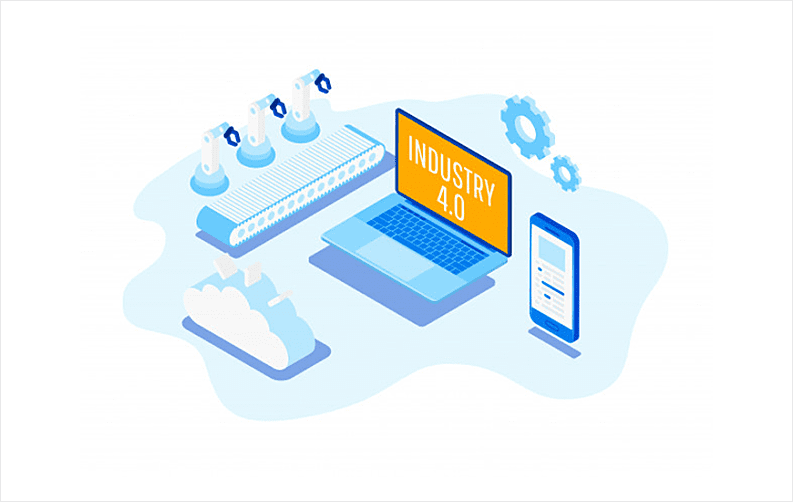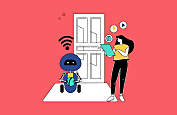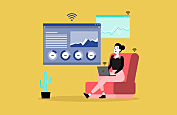

You don’t want to lag behind your competition and feel ready to jump on the IoT bandwagon? You know already that a mobile app is a quasi indispensable in building a connected ecosystem, but don’t know how to leverage its power? We have collected some tips on how a mobile app layer of smart technologies can help you thrive and bring more satisfaction to your customers and more revenue to your business.
How Much IoT-enhanced Mobile Apps Impact Business
Iot-empowered apps have entered nearly every vertical and change the way it is functioning. Of course, a mobile app is only part of the IoT infrastructure.
However, combined with new tech advances and technologies of the moment, it can boost your sales and productivity levels, as well as change the whole way you are doing business.
- Accessibility: A mobile phone’s portability guarantees that its user has a 24/7 access to the control over an IoT system.
- More data to mine: IoT systems gather and mine data from sensors, connected devices - and mobile phones. When a smartphone becomes another element in a connected infrastructure, it gives loads of data about its user’s habits, preferences, and lifestyle, which opens the door to more personalized promotions, home adjustments, and other use cases. These elements are further leveraged by mobile app development services to personalize the apps.
Advanced User Experience
Aiming at making mobile apps convenient for final users, Internet of Things application development companies, however, don’t focus solely on delivering user-friendly interfaces anymore. Today mobile apps, which make part of an IoT network, are built with better integration with other connected devices in mind. They should, on the one hand, interoperate with other parts of a system; on the other, they are expected to realize the benefits of apps, that is portability, intuitive use, and seamless integration into everyday routine activities.
Consumer-Centric Apps in Industrial IoT
Back in 2017, Sundar Krish, CEO at Waygum.i, pointed out that,
“The Industrial IoT is generally believed to be accelerated by several technologies and products getting better and cheaper—in the sensor, edge computing, cloud, network connectivity, and big data spaces [...] However, one mega trend that actually contributes a lot more to Industrial IoT, yet somewhat under appreciated, is mobile.”
The reason is clear: today nearly every person, including industrial workers, has a smartphone, providing 24/7 access to a connected infrastructure. This explosion of the user base can be used in multiple ways.
Remote Monitoring
With a mobile phone, any connected product can be made accessible from anywhere at any time.
“The de facto use case for any industrial IoT system, is monitoring,” said Sundar Krish.
Oil and gas industries, manufacturing plants, iron and steel factories - any industry can enhance its preventive maintenance policy by setting up an effective enterprise IoT solution and providing their workers with a real-time monitoring app on top of it. Such apps present a dashboard, allowing its users to view equipment performance data in the form of charts, diagrams, and graphics, and receive alerts once something goes wrong.
Customers can also get used of remote monitoring functionality. Mercedes-Benz, one of the pioneers in using smart technologies and the cloud in auto manufacturing, has demonstrated
how it can be done with its Mercedes Me app. The mobile application provides users with remote vehicle control and well as details for diagnostics and assistance with vehicle repairs.
Mobile Workflow
Automation and digitization - these are two keywords for today’s industrial transformation. IoT provides all the necessary process efficiency tools for this transformation, increasing the productivity of employees.
Check the example of Bord Gáis Energy’s Whitegate power plant in Ireland. It uses an advanced Asset Performance Management (APM) solution to digitize the facility. Thanks to the platform, the power plant has 24/7 monitoring through over 140 sensors based all around the location.
Industrial workers have a consolidated view of the plant’s performance along with alerts signaling unexpected troubles so that the plant can prevent highly undesirable and costly downtime. All this information is presented on desktop screens and mobile phones.
Promoting Edge Computing
A mobile phone can be added to an array of sensors combines into an IoT ecosystem, and serve both as a modem and as an edge device. Integrating IoT into the Financial Sector
Much has been said recently about merging IoT and Blockchain. While the former needs a safe method for automating processes and exchanging data, the latter can provide the requested level of security to govern the communication of data between the connected devices.
Blockchain-based mobile apps have multiple advantages for the IoT environment. They are decentralized (information is not stored in one single entity), immutable (no modifications to ledgers can be made without the network agreeing to it), and uncontrollable by any authority. These characteristics allow guaranteeing security when it comes to 2 most vulnerable topics - personal data and finance.
Mobile apps as part of an IoT infrastructure can enhance many operations, including:
- Personal data management in any sort of IoT project.
- Payments and transfers in financial operations.
- Signing of contracts, by enforcing Smart Contract practices.
- Health monitoring in Smart Hospital and connected healthcare systems.
IoT systems involving transactions related to money, document flow, or contracts will only win if mobile apps, associated with them, will be as secure and stable as blockchain functioning. A successful example of the blockchain technology integrated into IoT and, namely, mobile app development, is Chronicled. The app, backed up by the blockchain technology, is used for securely tracking documents and changes in them, such as new versions, revisions, and status updates.
Personalized User Experience in Retail
However omnipresent online shopping is getting, brick-and-mortar shops remain attractive for clients. They are broadening their presence online and implementing new sales strategies, while e-shops are opening physical stores (so-called “clicks to bricks” trend).
BLE-empowered beacons, smart shelves, robot employees - these are just some of the elements of today’s technologically advanced physical stores.
IoT is a major tool, influencing the entire shopping journey. It paves the way to new types of data from new sources, in accordance with the Know Your Customer (KYC) trend: in-store traffic counters, kiosks, inventory tags - and customers’ mobile phones with the installed apps. Retailers have learned to leverage mobile apps in their connected systems.
In-Store Navigation
With their mobile phones, customers can easily find products their searching for. Some major retailers, such as Lowe’s, have already implemented this technology to enhance their customers’ shopping experience. IoT-enabled mobile applications search for products, add them to a shopping list and find them inside the store.
Other retailers make it one step further and provide customers with additional services. For example, Sephora’s mobile app evolves from simple navigation assistance to a store companion tool. When a customer enters the store, the app provides product recommendations based on that user’s profile and purchase history.
Automated Checkout
Self-checkout kiosks allow customers to pay for their purchases without human intervention: a set-up system reads tags on the products and automatically deduces the cost from the customer’s mobile payment app.
This approach saves customers’ time, especially on a time crunch, and saves retailers money, reducing the number of employees and making a store more attractive. Amazon Go stores were a pioneer in this technological area; now the number of retailers, who have launched mobile solutions for automated checkout systems, has considerably augmented, today including retail giants like Walmart and Target.
Personalized Promotions and Discounts
Mobile apps, interacting with in-store sensors and other IoT system elements, allow making customized best-price offers. Retailers can send loyalty discounts when a certain customer is detected nearby, thus building loyal relations with them.

Sr. Content Strategist
Meet Manish Chandra Srivastava, the Strategic Content Architect & Marketing Guru who turns brands into legends. Armed with a Masters in Mass Communication (2015-17), Manish has dazzled giants like Collegedunia, Embibe, and Archies. His work is spotlighted on Hackernoon, Gamasutra, and Elearning Industry.
Beyond the writer’s block, Manish is often found distracted by movies, video games, AI, and other such nerdy stuff. But the point remains, If you need your brand to shine, Manish is who you need.












